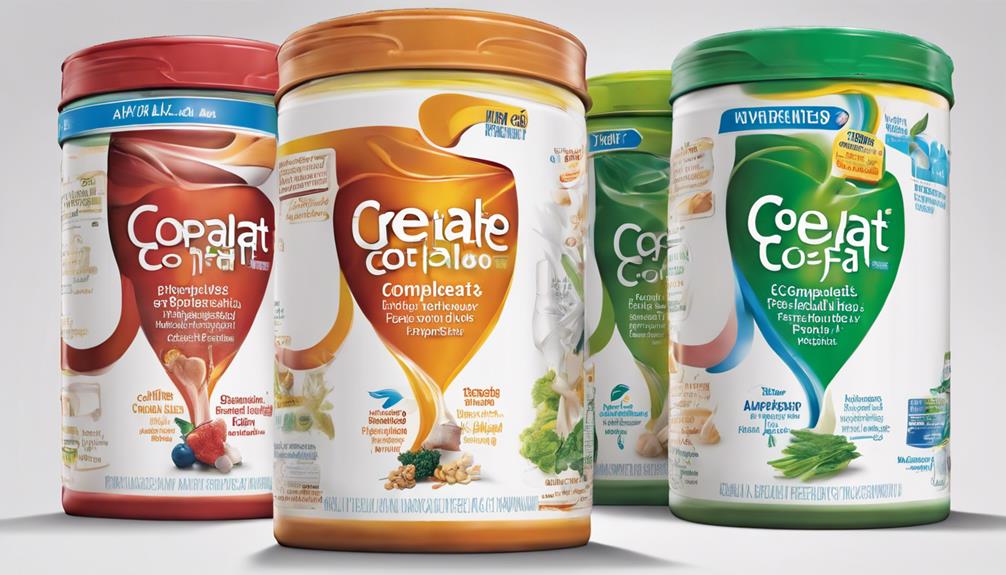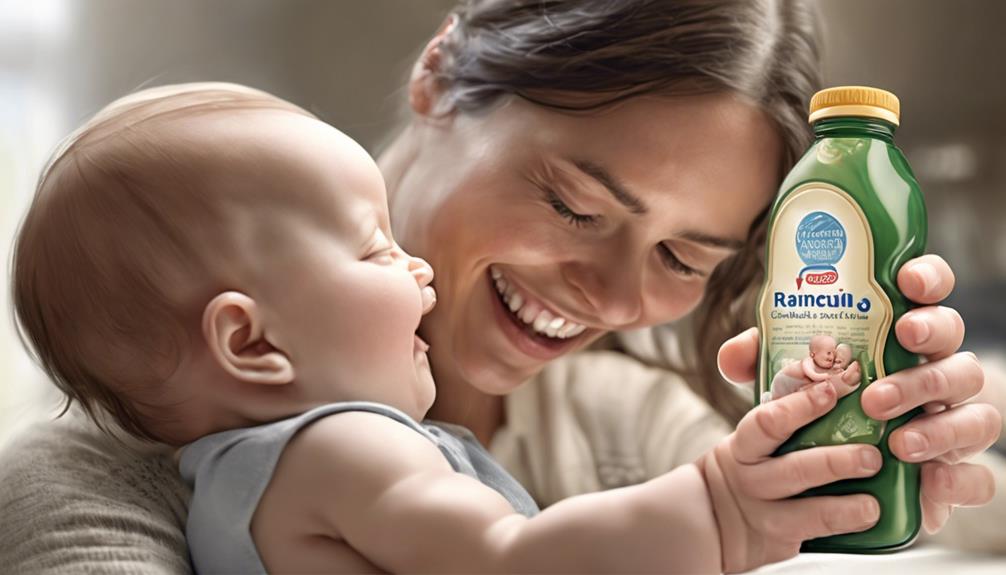Navigating the world of formula feeding can feel like walking a tightrope. But fear not, we have the ultimate guide to help you safely navigate and protect your baby’s health.
By deciphering the intricacies of proper preparation, storage, and feeding techniques, we pave the way for a smoother and risk-minimized formula feeding experience.
Let's untangle the layers of precaution and expose the secrets to nurturing your baby with confidence and peace of mind.
Key Takeaways
- Choose the right formula based on age, needs, and nutrients.
- Sterilize feeding equipment properly to prevent bacteria growth.
- Follow safe preparation steps to maintain formula quality.
- Ensure nutritional balance and consult healthcare providers for guidance.
Choosing the Right Formula
When choosing the right formula for your baby, consider their age, dietary needs, and any allergies as key factors in the decision-making process. It's important to look for powdered infant formulas that cater to your child's specific dietary requirements, ensuring they receive the necessary nutrients for healthy development. Check the formula label for ingredients and make sure it's fortified with essential nutrients like iron, DHA, and ARA to promote ideal infant development.
Exploring various formula brands allows you to compare factors such as ingredients, price, and availability, empowering you to make an informed choice for your little one. Consulting with a healthcare provider can offer valuable insights tailored to your baby's unique needs, guiding you towards the most suitable option. Remember, the right formula not only meets your baby's nutritional needs but also considers any allergies they may have, fostering their growth and well-being.
Proper Sterilization Techniques
Properly sterilizing feeding equipment is essential to safeguard your baby's health and prevent harmful bacteria growth.
When it comes to ensuring the safety of your little one, utilizing effective sterilization methods such as boiling, steam sterilization, or chemical sterilization for bottles, teats, and accessories is paramount.
Before each use, carefully inspect the feeding equipment for any cracks or damage that could potentially harbor harmful bacteria.
After sterilization, store the sterilized items in a clean container to maintain their sterility until needed.
Safe Preparation Steps
To guarantee the safety and well-being of your baby during formula feeding, it's important to follow these safe preparation steps diligently. Start by washing your hands and sterilizing all equipment to prevent contamination.
Follow the manufacturer's instructions carefully to make accurate measurements of water and formula. It's essential to have the formula at the correct temperature before feeding to prevent any potential risks to your baby's health.
After preparing the formula, store it in the fridge and remember to discard any unused portion after 24 hours to maintain safety standards. When reheating the formula, use heated water or a bottle warmer, avoiding the microwave, as it can create hot spots.
Also, remember to discard any unused formula after two hours at room temperature. These steps are important in ensuring the formula is safe for your baby to consume and maintain its quality within its 24-hour shelf life.
Storage Guidelines

Ensuring the freshness and safety of prepared formula is essential, requiring storage in a sterilized container in the coldest part of the fridge. Proper storage practices play a vital role in maintaining formula quality and safeguarding your baby's health.
Here are some guidelines to help you navigate this important aspect of formula feeding:
- Refrigerate promptly: After preparing the formula, transfer it to a sterilized container and place it in the coldest section of the refrigerator. This step helps prevent bacterial growth and ensures the formula remains safe for your little one.
- Discard after 24 hours: To maintain optimal freshness and reduce the risk of contamination, discard any unused formula after 24 hours of refrigeration. This simple practice can help safeguard your baby from potential health issues.
- Re-warm with care: When it's time to feed your baby, re-warm the formula gently using heated water or a bottle warmer. Avoid using microwaves as they can lead to uneven heating, affecting the formula's quality and potentially creating hot spots that could harm your baby's delicate mouth.
Ensuring Nutritional Balance
Upon refrigerating the prepared formula promptly in a sterilized container, the next step is ensuring a balanced nutritional intake to support your baby's growth and development effectively. It's important to select the right type of formula – whether powdered, liquid, or ready-to-feed liquid formula – that meets your baby's specific needs. When preparing the formula, always follow the recommended amount of water and formula powder to maintain the proper nutritional balance. Avoid altering the formula by diluting it or adding extra ingredients, as this can disrupt the essential nutrients your baby requires for healthy development.
Monitoring your baby's growth, weight gain, and overall health is key to evaluating the formula's effectiveness in meeting their nutritional requirements. If your baby has a milk allergy or any concerns about their immune system, consult with a healthcare provider or pediatrician for guidance on selecting the most suitable formula. Remember, providing ideal nutrition is essential for supporting your baby's overall health and well-being.
Frequently Asked Questions
What Are the Guidelines and Considerations for Formula Feeding?
We follow guidelines for formula feeding by measuring formula accurately, sterilizing equipment, and using safe water. It's essential to prioritize baby's health and follow proper instructions. We aim to provide reliable care and information for formula feeding.
How Do You Safely Feed Formula?
When feeding formula, we prioritize safety by washing hands, sterilizing equipment, measuring accurately, warming gently, and using prepared formula promptly. These steps guarantee proper nutrition and minimize risks of contamination, supporting healthy feeding practices.
What Are the Risk Factors of Formula Feeding?
When formula feeding, risks like bacterial contamination from improper handling, storage, or preparation exist. It's essential to follow strict guidelines to protect babies. Hygiene and water quality matter. We must prioritize safety.
How Do You Manage Formula Feeding?
We manage formula feeding by practicing proper hygiene, measuring accurately, storing correctly, checking temperatures, and avoiding microwaves. These steps guarantee our baby receives safe and nutritious formula, minimizing risks and promoting their health and well-being.
Conclusion
As caregivers, we must prioritize the well-being of our little ones by following proper formula feeding practices. By choosing the right formula, sterilizing equipment diligently, and ensuring safe preparation and storage, we can minimize risks and promote their health.
Let's remember: a little extra effort now can lead to a lifetime of well-being for our precious babies. Let's feed them with love, care, and attention to detail.










